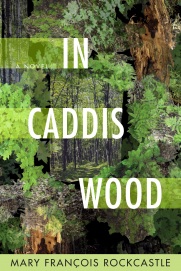A Distant View of Everything Alexander McCall Smith (2017)
The Isabel Dalhousie Series
The detective is a fortyish woman in Scotland who edits an academic journal about applied ethics. Seriously? Only Alexander McCall Smith could pull this one off, and he has, for eleven books in this bestselling series of mellow mysteries.
It all started in 2004 with McCall Smith’s The Sunday Philosophy Club, where we meet Isabel Dalhousie. Isabel is an independently wealthy divorcée, so she can afford to pursue her scholarly interest in ethics without pay, and she has the time to investigate activities she comes across that she considers ethically questionable. “There was no reason why she should become involved in the affairs of others, but she seemed to be irresistibly drawn into them. And every time that she did it, it was because she imagined that there was a moral claim on her.” (69)
You might just call Isabel a busybody, but she has many other defining qualities. She speaks Italian, attends classical concerts, collects fine art, and works crossword puzzles. She treasures her city of Edinburgh, though she’s half American: “Her own heritage, she thought, was enviable: Scottish commonsense philosophy on one side and American pragmatism on the other. That was a perfect combination.” (163-4)
Isabel can be stuffy. She muses on sundry subjects randomly, and she can go off into quotes from the poet WH Auden (whom she calls “WHA”) at any moment. She refers casually to the writings of philosophers such as Immanuel Kant. Since I live with a philosopher whose specialty is Kantian ethics, I have assistance with these references, but you can always Google them. The philosophy background adds considerably, I think, to the multifaceted personality that McCall Smith is building for Isabel. (Reader friends of mine either enjoy this approach or despise it.)
Where this series gets spicy is at the third installment, The Right Attitude to Rain (2006), in which Isabel enters into a love affair with Jamie, a handsome, kind bassoonist who’s fourteen years her junior—and also the former lover of Isabel’s niece. As with other aspects of the McCall Smith novels, you’re likely to find the Isabel/Jamie affair either charming or ridiculous. The vagaries of this relationship intertwine with the mystery plots through the rest of the novels.
The mysteries don’t usually involve death. In fact, in A Distant View of Everything, the most recent of the series, Isabel investigates whether a matchmaker’s pairing of a couple is suitable. This plot line is thin, but the ongoing saga of Isabel, Jamie, and their expanding family fills in. Yes, I’ll reveal that the cougar Isabel gets pregnant in her forties, and Jamie is a doting dad.
McCall Smith uses a fair number of Scots words and phrases to add Edinburgh flavor to these novels, but he’s usually careful to provide clues to his dialect choices in the context. In case you’re wondering, though, Scots slang for a toilet is “cludgie,” and in British slang the cheap theater seats, in the highest balcony, are called “the gods.”
And one more thing: the Sunday Philosophy Club doesn’t actually meet. It’s more a pleasant idea. If you want to catch up with the Isabel Dalhousie books, here’s the list to date: The Sunday Philosophy Club (2004), Friends, Lovers, Chocolate (2005), The Right Attitude to Rain (2006), The Careful Use of Compliments (2007), The Comforts of a Muddy Saturday (2008), The Lost Art of Gratitude (2009), The Charming Quirks of Others (2010), The Forgotten Affairs of Youth (2011), The Uncommon Appeal of Clouds (2012), The Novel Habits of Happiness (2015), A Distant View of Everything (2017). In addition, three shorter Isabel Dalhousie stories are available as e-books.























